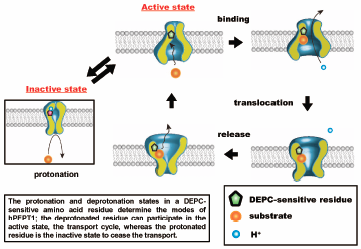- 著者
- Wongsuda YALA Pawish SURANUNT Yuki FUJISAWA Wanchart YIPPADITR
- 出版者
- JAPANESE SOCIETY OF VETERINARY SCIENCE
- 雑誌
- Journal of Veterinary Medical Science (ISSN:09167250)
- 巻号頁・発行日
- vol.84, no.10, pp.1442-1446, 2022 (Released:2022-10-07)
- 参考文献数
- 27
Two male cats were presented with penile part of urethra injury due to dog attacks to the perineum and genitalia area. Chronic wound around a remained penile part of urethra due to the dog bite and perineal area was evident due to urine irritation. The buccal mucosa was harvested and subsequently placed on the granulation tissue of the wound to reconstruct the urinary passage. The buccal mucosal graft completely attached to the skin and urethra without any complications. From the follow-up at 3 months, the cats were able to urinate normally and the skin irritation from urine was resolved. In summary, the buccal mucosa is a good graft source and is suitable for the reconstruction of the urinary passage in severe and complicated cases of penile part of urethra injury in male cats.
- 著者
- Wongsuda YALA Pawish SURANUNT Yuki FUJISAWA Wanchart YIPPADITR
- 出版者
- JAPANESE SOCIETY OF VETERINARY SCIENCE
- 雑誌
- Journal of Veterinary Medical Science (ISSN:09167250)
- 巻号頁・発行日
- pp.22-0232, (Released:2022-08-30)
Two male cats were presented with penile part of urethra injury due to dog attacks to the perineum and genitalia area. Chronic wound around a remained penile part of urethra due to the dog bite and perineal area was evident due to urine irritation. The buccal mucosa was harvested and subsequently placed on the granulation tissue of the wound to reconstruct the urinary passage. The buccal mucosal graft completely attached to the skin and urethra without any complications. From the follow-up at 3 months, the cats were able to urinate normally and the skin irritation from urine was resolved. In summary, the buccal mucosa is a good graft source and is suitable for the reconstruction of the urinary passage in severe and complicated cases of penile part of urethra injury in male cats.
- 著者
- Akiko Omori Yuki Fujisawa Shotaro Sasaki Kazumi Shimono Takashi Kikukawa Seiji Miyauchi
- 出版者
- The Pharmaceutical Society of Japan
- 雑誌
- Biological and Pharmaceutical Bulletin (ISSN:09186158)
- 巻号頁・発行日
- vol.44, no.5, pp.678-685, 2021-05-01 (Released:2021-05-01)
- 参考文献数
- 45
- 被引用文献数
- 6
To clarify the role of an amino acid residue in the pH-dependent efflux process in Chinese hamster ovary (CHO) cells expressing the human oligopeptide transporter hPEPT1 (CHO/hPEPT1), we determined the effect of extracellular pH on the hPEPT1-mediated efflux process. The efflux of glycylsarcosine (Gly-Sar), a typical substrate for hPEPT1, was determined using an infinite dilution method after cells were preloaded with [3H]-Gly-Sar. The efflux of [3H]-Gly-Sar was stimulated by 5 mM unlabeled hPEPT1 substrates in the medium. This trans-stimulation phenomenon showed that hPEPT1 mediated the efflux of [3H]-Gly-Sar from CHO/hPEPT1 and that hPEPT1 is a bi-directional transporter. We then determined the effect of extracellular pH (varying from 8.0 to 3.5) on the efflux activity. The efflux activity by hPEPT1 decreased with the decrease in extracellular pH. The Henderson–Hasselbälch-type equation, which fitted well to the pH-profile of efflux activity, indicated that a single amino acid residue with a pKa value of approximately 5.7 regulates the efflux activity. The pH-profile of the efflux activity remained almost unchanged irrespective of the proton gradient across the plasma membrane. In addition, the chemical modification of the histidine residue with diethylpyrocarbonate completely abolished the efflux activity from cells, which could be prevented by the presence of 10 mM Gly-Sar. These data indicate that the efflux process of hPEPT1 is also regulated in a pH-dependent manner by the protonation state of a histidine residue located at or near the substrate recognition site facing the extracellular space.
